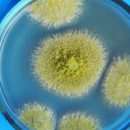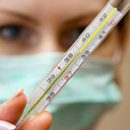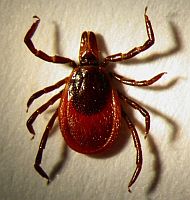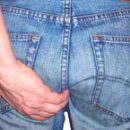The main method of diagnosing Iersiniosis is laboratory tests with which the type of pathogen is determined. With the medium and heavy form of Iraciniosis, treatment is carried out only in the hospital. With no complicated forms, sufficiently compliance with the diet.
Content
Diagnosis of Iersiniosis
Methods of laboratory diagnostics of Iersiniosis
Diagnosis of Iraciniosis is based on the detection of the fragment of the genesis of the pathogen by the method of polymerase-chain reaction in feces or blood. The definition of antibodies to the yersiniosis is carried out by the method of enzyme immunode analysis. For bacteriological research, all patients take feces (3-5g) and urine (50-100ml), according to indications - spinal fluid, sputum, bile, pus from abscesses, etc., And for serological examination - blood (1-2ml). The material before departure to the laboratory is stored in the refrigerator, a buffered or 0.85% isotonic solution of sodium sodium chloride is used as an accumulation medium. After the day of incubation in the refrigerator, the test tube with the material is placed in the refrigeration chamber at a temperature - 12-18 s per 18-20 hours or at a temperature - 24-30 ?From for 2-3 hours («Cold strike»). After in the thermostat, sowing on dense nutrient media and grown in a thermostat at a temperature of 22-25 s. Next hold the identification of the pathogen.
Instrumental diagnosis of the disease
X-ray and endoscopic examination of the ileum makes it possible to detect the so-called follicular ileyt (the inflammation of the todium intestine) - numerous nodules of lymphoid hyperplasia (change in structure) in the ileum.
In the study of blood, leukocytosis (increasing the number of leukocytes, especially at the beginning of the disease and during exacerbation) and acceleration of ESP to 35-60 mm / h. The urine detects protein (0.03-0.24 g / l), and the height of the disease - leukocyturia (leukocytes in the urine), microhematuria (a small amount of red blood cells in the urine).
With a biochemical study of blood, in addition to increasing free bilirubin, there is also a bound bilirubin, as well as a moderate increase in the activity of alanine substransferase and aspartatenotransferase, specific liver work indicators.
Treatment of the disease
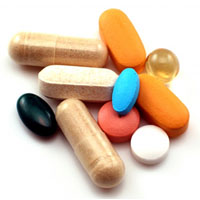 Patients with yersiniosis are hospitalized depending on the severity of disease manifestation. With a non-complicated gastrointestinal form, it is sufficiently compliance with the diet and conducting therapy, similar to treatment with other acute intestinal infections (disintellation - the removal of toxic products from the body, oral (intake) or parenteral (provides intravenous administration) the introduction of the fluid depending on the dehydration degree).
Patients with yersiniosis are hospitalized depending on the severity of disease manifestation. With a non-complicated gastrointestinal form, it is sufficiently compliance with the diet and conducting therapy, similar to treatment with other acute intestinal infections (disintellation - the removal of toxic products from the body, oral (intake) or parenteral (provides intravenous administration) the introduction of the fluid depending on the dehydration degree).
With moderate and heavy, as well as during a protracted, wave-like flow of this form, antibiotics are prescribed - leftomycetin (10 mg / kg of body weight) or tetracycline in medium therapeutic doses within 10-12 days.
A good therapeutic effect is achieved if used Biseptol-480 to 2 tablets 2 times a day for 10 days.
In severe cases, corticosteroids are prescribed - prednisone according to the scheme.
With all the other forms of heersiniosis (abdominal, generalized, secondary-focal) therapy against the pathogen is mandatory.
Antibacterial therapy affects not only the duration of the feverish period and the severity of intoxication, but also significantly reduces the percentage of relapses and warns in some cases the transition of localized forms of heersiniosis in a common. The desensitizing therapy (antihistamines) also includes the treatment of patients with Iersiniosis (antihistamines).
With abdominal form in some cases (Iraciniosal appendicitis) need operational treatment (Appendectomy - removal of appendicitis). In the postoperative period, the course of antibiotic therapy must be carried out.
With a generalized form, antibiotics are prescribed only intraphrants (for example, levomycetin succinate), there are usually conducting several courses of treatment with successively various drugs (better taking into account the sensitivity of the Iersinis allocated from the patient). In order to increase immunogenesis, preparations containing finished antibodies (polyglobulin, immunoglobulin, plasma) are used.
Under arthritis, treatment is carried out by anti-inflammatory non-steroidal agents (indomethacin, chlorotazole, ibuprofen, voltar, naproxen, acetylsalicylic acid, butadion, degreeh, etc.) In individually selected doses for several months (the duration of treatment depends on the state of the patient and the SE indicators).
In cases of development of persistent inflammation of one joint (monoarthritis), the intra-articular introduction of corticosteroids (hydrocortisone suspension, Kenaloga, etc.).
With noded erythene and myocardium, the same drugs are used as in the treatment of arthritis, with a protracted and severe course, prescribed, in addition, prednisone (30-40 mg per day inside).
With Iraciniose hepatitis, great importance for the restoration of the normal process of digestion plays compliance with diet. When meningitis, preference should be given a levomycetin succinate in a daily dose of 50-100 mg / kg of body weight, introduction with an interval of 8 hours.
In the absolute majority of cases, the disease ends with recovery. In persons with reduced resistance, septic conditions develop, in individual patients the disease takes a protracted or chronic course.
Prevention of Iersiniosis
In the prevention of Ierisiniosis infection, sanitary and hygienic measures are played, which is to carry out the cleaning of the territory, the removal of garbage and sewage, controlling the quality of drinking water, compliance with the rules for storing products, cooking food.
When used in food, raw vegetables and rootfields need to be rinsed well in warm water, to clean all the fired sections with a knife, then rinse again and scream with boiling water. Such processing reduces the number of bacteria on the surface of the fruit. It is worth repeating that only freshly prepared salads serve. At the first signs of the disease, it is necessary to consult a doctor, analyze the menu in recent days and report an estimated source of infection.

